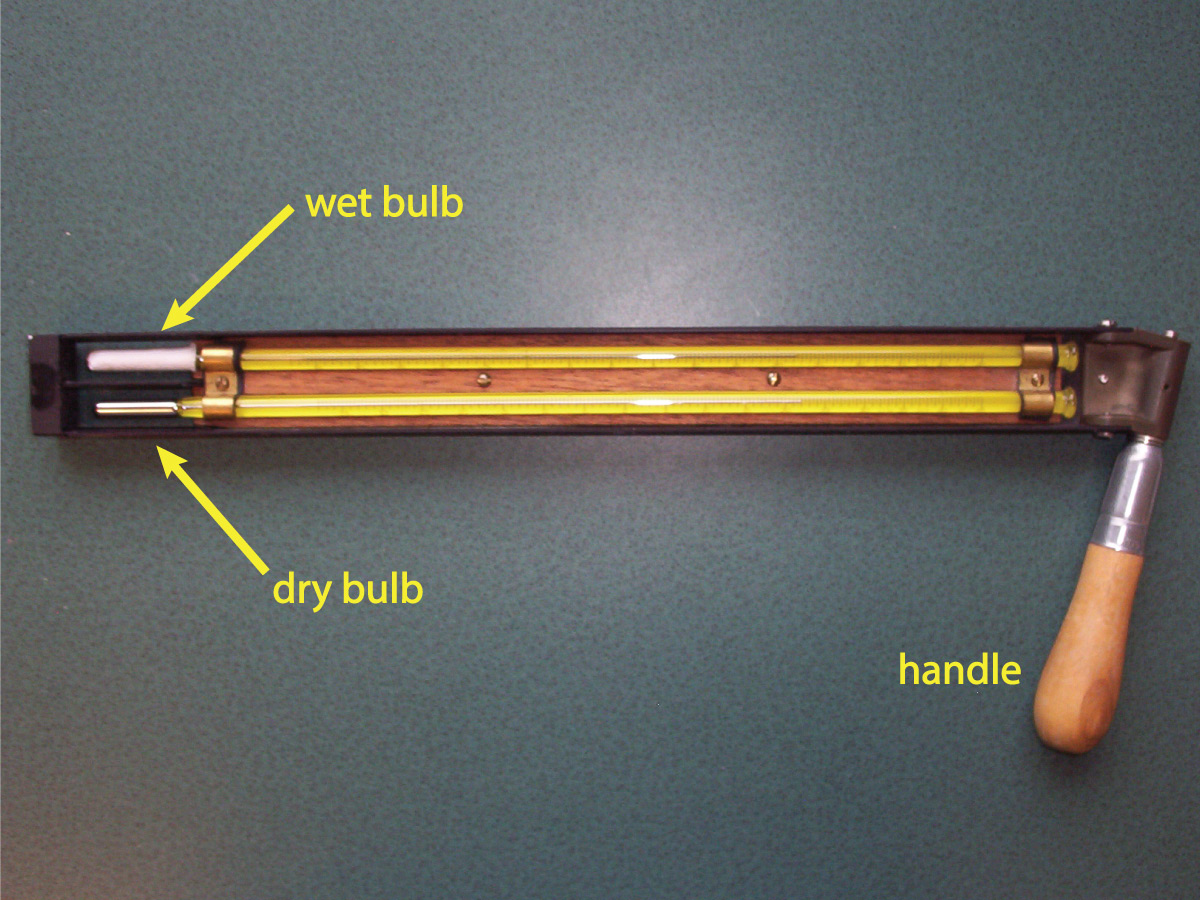How is relative humidity measured?
Several different types of devices can be used to measure relative humidity, but the simplest and most common is called a psychrometer (Figure 1). A psychrometer consists of two thermometers, one of which has its bulb (the part that senses the temperature) covered by a small cotton “sock” that you dip in water before making a measurement. You then swing the psychrometer around, so that the “wet bulb” (with the sock) and the “dry bulb” (without it) each record a temperature:
- The dry bulb will tell you the actual air temperature.
- The wet bulb will read a somewhat lower temperature, because evaporative cooling lowers the temperature of the wet sock.
The higher the relative humidity, the more difficult it is for water to evaporate. Therefore, the wet and dry bulb temperatures will be close to each other when the relative humidity high (because there is less evaporative cooling) and farther apart when the relative humidity is low (allowing for more evaporative cooling).
The final step in determining the relative humidity is to use the wet and dry bulb temperatures to calculate the relative humidity. Because relative humidity depends on temperature, the actual calculation is fairly complex. However, there are charts that you can use to do this, which is the traditional way by which people at weather stations have been able to report the relative humidity.
